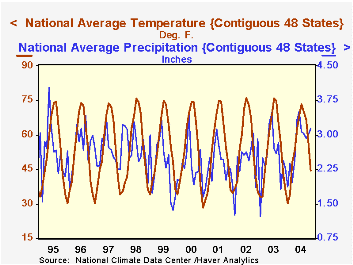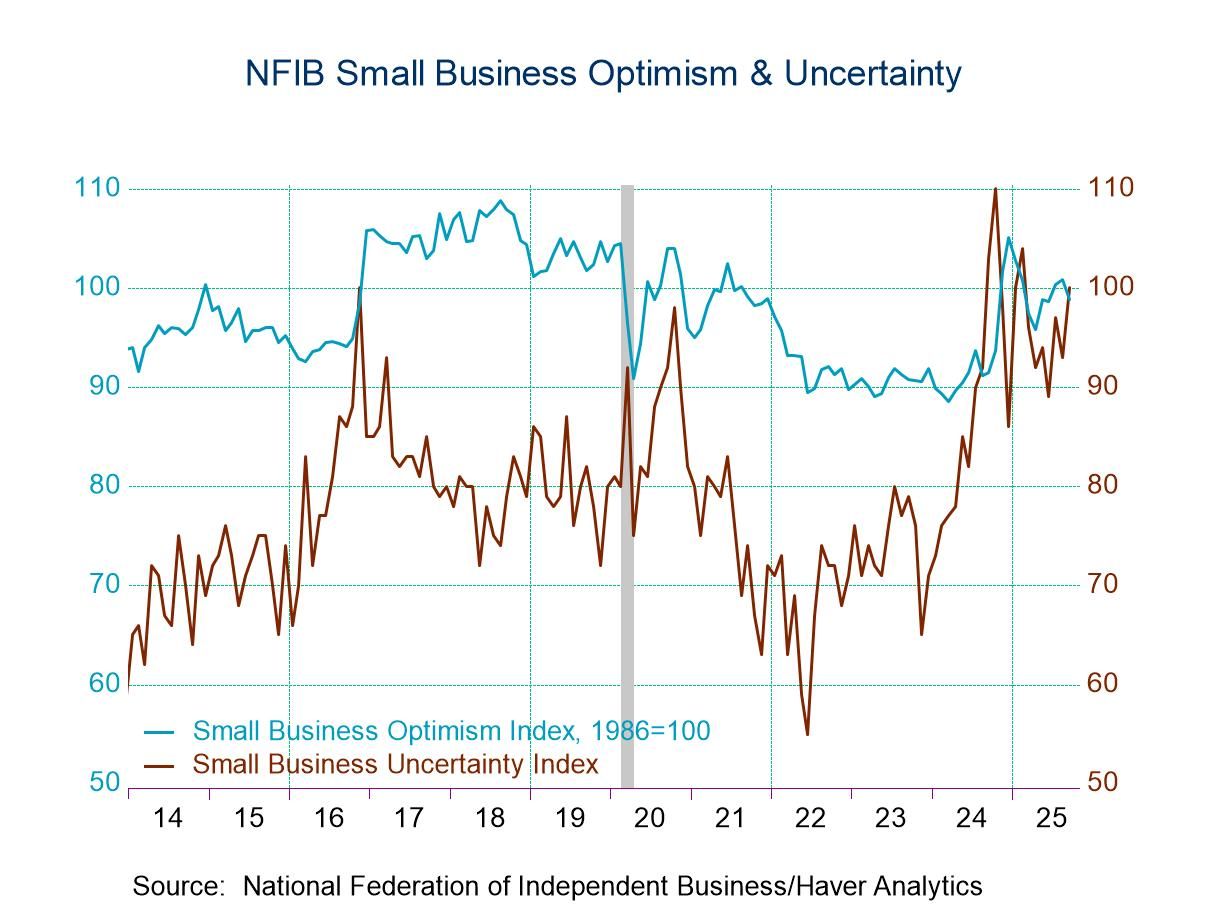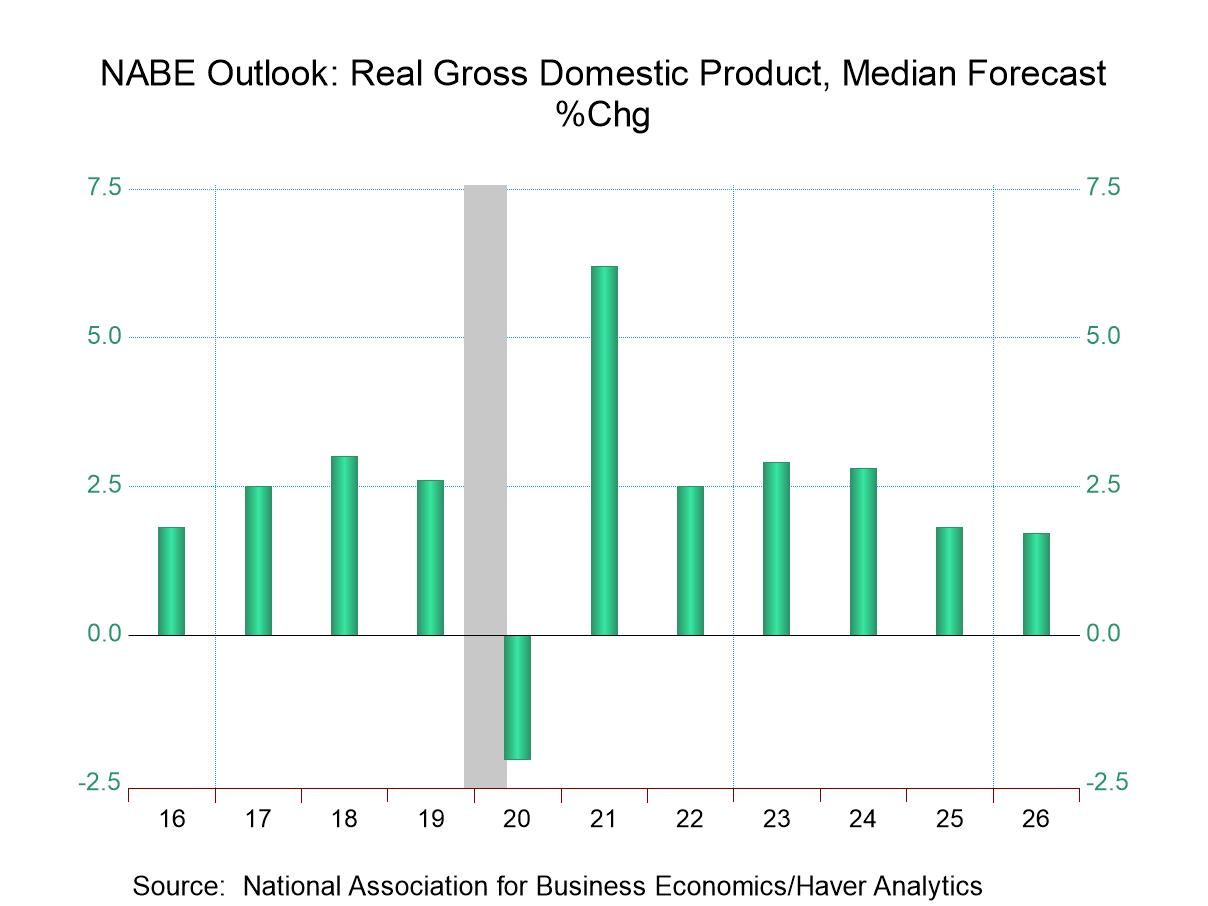 Global| Dec 03 2004
Global| Dec 03 2004November Has Average Temperature in US, But Lots of Rain
Summary
Such a simple concept: the weather. But what an effect it can have, on economic activity and other aspects of life. The National Climatic Data Center, an office in the Commerce Department, maintains weather data for the US and many [...]

Such a simple concept: the weather. But what an effect it can have, on economic activity and other aspects of life. The National Climatic Data Center, an office in the Commerce Department, maintains weather data for the US and many parts of the world. These data are important in judging prospects for construction activity, shipping and agricultural activity, among other aspects of the economy. Haver's most basic database, USECON, includes two of these items, the average temperature in the US (48 contiguous states) and average precipitation, monthly all the way back to 1921. In the REGIONAL database, the same items are shown for the nine Census regions and 48 states.
In November, the nation's temperature averaged 44.4ºF., 11.9º below October and 28.0º below the year's peak in July. November's temperature has averaged 43.2º for the last ten years. This year's level also represents fairly average declines from the recent summer and early fall months.
What's different this year is the amount of rainfall. Only a modest fraction of any months have as much as 3" of rain, but November had 3.14". The average for the last ten Novembers is 2.36". In addition, as one might surmise after four major hurricanes this autumn, 2004 has been a wet year. For the first eleven months of each of the last ten years, precipitation has averaged 2.56" monthly, but this year, we've had 2.79", about 9% more than the decade-long trend.
Economic measures are hard to correlate numerically with weather performance. A cursory look at some construction items in November shows that housing starts and permits, for example, don't necessarily strengthen in a warm November or weaken in a cold one. But home sales do, as suggested by the monthly changes shown in the table below for sales not seasonally adjusted. Cold or muddy conditions are not especially conducive for would-be buyers to tramp around, looking at houses. So new home sales tend to weaken in such periods. And some severe weather can actually contribute to more vigorous activity, as in the need in Florida for extraordinarily large amounts of reconstruction work. Thus, weather data are important and useful in economic analysis, but cannot be used in isolation to assess even closely related economic pursuits.
| November | 2004 | 2003 | 2002 | 2001 | 2000 | 1999 | 1998 |
|---|---|---|---|---|---|---|---|
| Temperature (ºF.) | 44.4 | 42.7 | 42.1 | 47.7 | 38.3 | 48.3 | 45.3 |
| Rainfall (inches) | 3.14 | 2.44 | 1.86 | 2.31 | 2.68 | 1.36 | 2.46 |
| Jan-Nov Average | 2.79 | 2.52 | 2.34 | 2.39 | 2.37 | 2.38 | 2.82 |
| New Home Sales (NSA, % Change from October) | NA | -13.6 | -5.2 | +1.5 | -11.3 | -9.0 | 1.4 |
Carol Stone, CBE
AuthorMore in Author Profile »Carol Stone, CBE came to Haver Analytics in 2003 following more than 35 years as a financial market economist at major Wall Street financial institutions, most especially Merrill Lynch and Nomura Securities. She had broad experience in analysis and forecasting of flow-of-funds accounts, the federal budget and Federal Reserve operations. At Nomura Securities, among other duties, she developed various indicator forecasting tools and edited a daily global publication produced in London and New York for readers in Tokyo. At Haver Analytics, Carol was a member of the Research Department, aiding database managers with research and documentation efforts, as well as posting commentary on select economic reports. In addition, she conducted Ways-of-the-World, a blog on economic issues for an Episcopal-Church-affiliated website, The Geranium Farm. During her career, Carol served as an officer of the Money Marketeers and the Downtown Economists Club. She had a PhD from NYU's Stern School of Business. She lived in Brooklyn, New York, and had a weekend home on Long Island.





